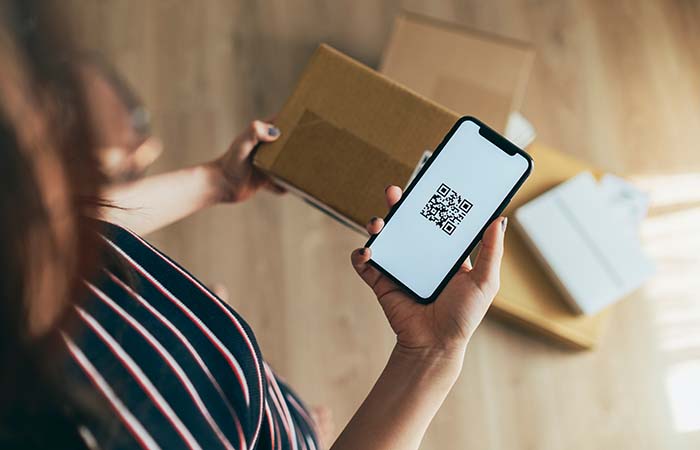Dealing with online returns
In Running Your Business
Follow this topic
Bookmark
Record learning outcomes
E-commerce offers many advantages for independent pharmacy businesses, but having an effective returns policy in place is vital, writes Adam Bernstein
Selling online can add much to a pharmacy – new customers, greater reach and, to an extent, ‘free’ advertising if social media is used properly. Consider Hafod Hardware, albeit a retailer in a different sector: its 2019 Christmas video was shot for £100 and by mid-February 2020 had been seen more than 2.6 million times on YouTube.
A number of pharmacies have taken the leap to online sales. Apart from pure online players such as Pharmacy2U and expresschemist, high street retailers like Boots, Lloyds and Superdrug are leading the vanguard. Independents need to consider doing the same.
The problem with online though is that it brings the risk of returns because of a statutory right granted to consumers to cancel an order within 14 days of receipt. At any one time, a proportion of sales are at risk of being returned, and returns mean a loss on standard delivery charges that have to be refunded, admin costs related to processing the returns, and of course, the question of what to do with returned items.
Why we return
There are a number of reasons why consumers return products. Some are legitimate, but others are close on illegal if not morally bankrupt. Take ‘wardrobing’, where consumers order clothing to wear once, without removing tags, and then return the item for a refund. Electronics and tools often see the same type of abuse.
According to a May 2022 report from delivery company Whistl, retail returns rose from 10.6 per cent of sales in 2020 to 16.6 per cent in 2021. Of the reasons given by surveyed consumers, 70 per cent said the return related to fit, 65 per cent to a damaged or defective item and just under half said the item was different from the description. A third just didn’t like what they’d bought, while smaller numbers complained of packages that arrived late or didn’t arrive at all.
These reasons should be easy to fix with detailed and accurate descriptions of the product, specifications and so on. Quality imagery from different angles that allows consumers to determine what they’re considering should also help. Product videos may also help consumers gain further insight. This approach works well with technical items including equipment and electronic devices.
Another option is to allow in-store collection. This cuts out the shipping cost and risk of products being damaged or going missing in transit. It also gives consumers the chance to examine an item before completing the purchase, which should reduce the need to return items as alternatives may be found while in store. Indeed, the Whistl report found that at least 30 per cent of all e-commerce orders are returned, compared to only 8.89 per cent in bricks-and-mortar stores. Click and collect clearly helps to lower the return rate.
But pharmacies should also be checking if certain products are being returned in greater numbers than others; a rise could indicate a problem with a particular product or the way in which it has been promoted. So when setting up the returns process, make sure that forms – paper or electronic – require a reason for the return.
Creating a returns policy
A decent returns policy is a must, and it should be written for use as a sales tool.
Be upfront: A returns policy should make it easy for consumers to understand their position; it should give them peace of mind. Remember, many consumers check a returns policy before making a purchase.
Cover shipping costs: Nothing in life is ever truly free, but we like to think it is. A 2021 survey from Klarna found that 84 per cent of online shoppers were more likely to buy from, and 86 per cent more likely to come back to, online merchants that offered free returns .
Give options: Convenience should be orientated around the consumer, not the retailer. This makes it important to offer options when making returns. In store, Royal Mail, Collect+, Evri, DHL – offer the flexibility that consumers demand.
For some people, instore returns are preferred as it’s easier to head to town than find tape to package items up. Also, it’s instant, with no wait for a refund or any worries about items being lost in the post.
From a retailer’s perspective, it also allows the potential for a ‘replacement’ sale, while reducing the retailer’s returns-related costs.
Others will still prefer to post items back, so a pre-printed returns label that is correctly addressed, legible and easy to apply is a must.
The refund: It stings to make a refund, but there’s no point dallying. From the consumer’s perspective, it’s an irritant that retailers seem quick to take payment, but slow to refund. Again, retailers that are slow may lose future custom – a point noted in the Whistl report, which noted that a quarter of shoppers thought a delay in processing their return contributed towards a negative experience.
Don’t forget Christmas: Black Friday and Christmas make for perilous times in retail as consumers often buy gifts ahead of the holiday season. By definition, the legal right to return won’t apply, but retailers should extend the returns period if they want to win people’s custom.
It’s a fact that consumers have rights that they are well aware of. This doesn’t make it easy for retailers, but risks can be managed, especially if goods are properly and accurately described.
If the right policy is put in place, a returns policy can become a great asset.

